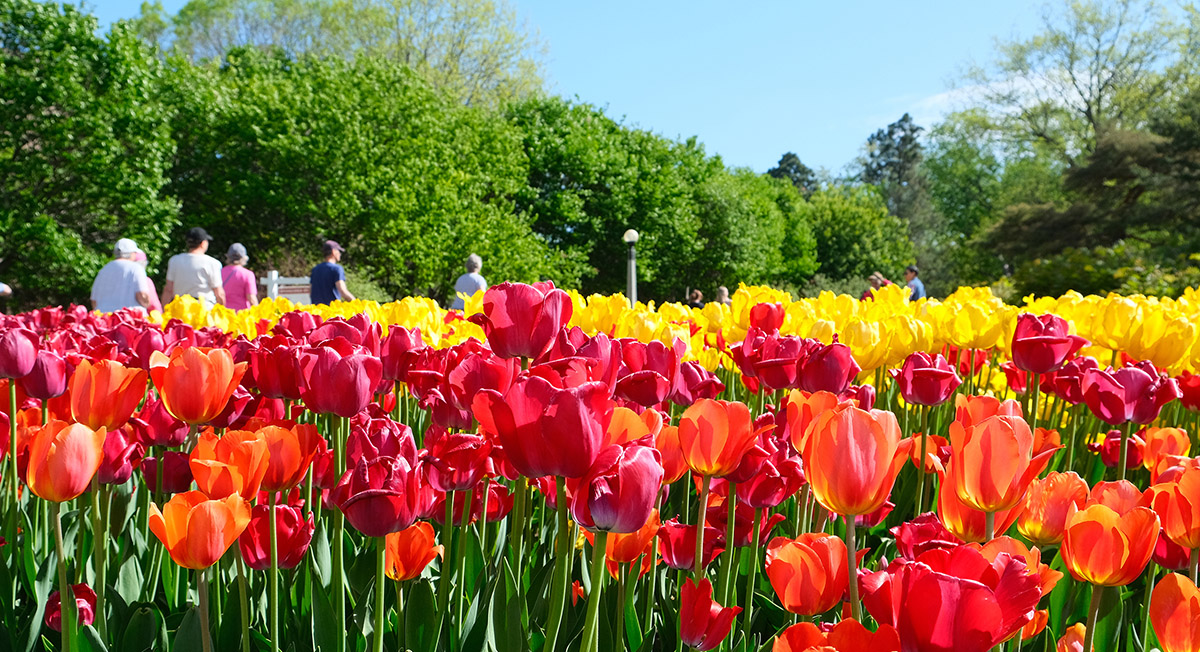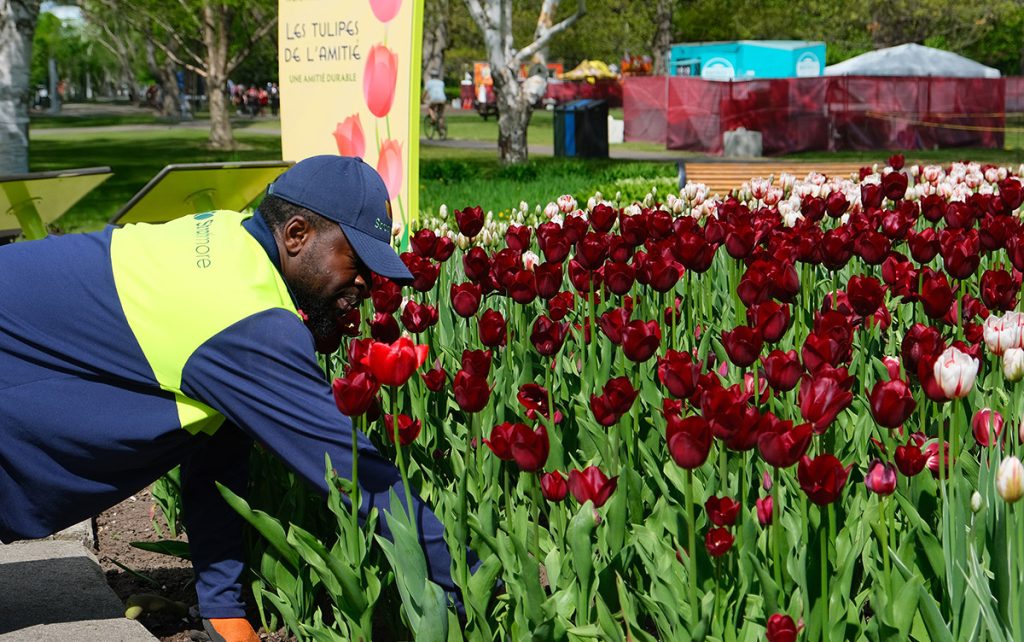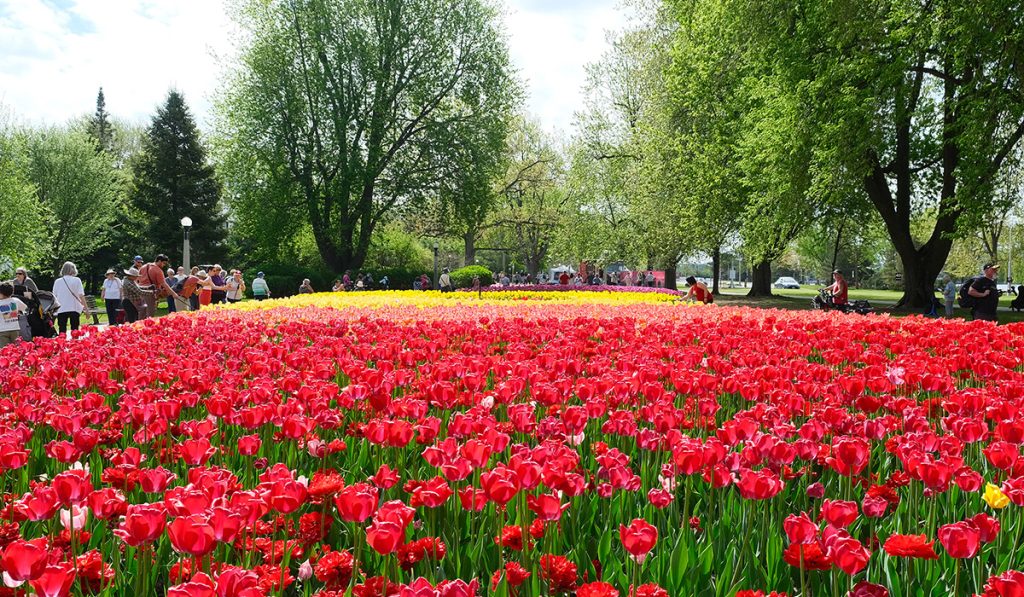
Strathmore and the Tulip Tradition: The Quiet Work Behind Ottawa’s Most Iconic Festival
Each May, Commissioners Park transforms into one of Ottawa’s most photographed landscapes, with over 300,000 tulips blooming in brilliant rows and patterns along Dow’s Lake. The Canadian Tulip Festival, now over 70 years old, draws more than half a million visitors annually and has become one of the largest public displays of tulips in the world.
While the flowers are the main attraction, few visitors realize just how much planning and coordination goes into getting those tulips in the ground—and making sure they bloom right on schedule. Behind the scenes, much of that work is led by Strathmore Commercial Landscape Management, a third-generation, family-owned company based in Ottawa.
As a trusted partner of the National Capital Commission (NCC), Strathmore is responsible for sourcing, planting, and maintaining tulips that make up the festival’s floral displays. Their work ensures that Ottawa’s most recognizable springtime event unfolds smoothly—from the initial design discussions to the final bloom.
Deep Roots in History
The Tulip Festival was born out of a powerful act of international friendship. During the Second World War, Canada gave refuge to the exiled Dutch royal family, including Crown Princess Juliana, who gave birth to Princess Margriet in Ottawa in 1943. To ensure Dutch citizenship, Canada symbolically declared the hospital room extraterritorial.
After the war, Princess Juliana thanked Canada by sending 100,000 tulip bulbs—a gesture that became an annual tradition. By 1953, under the guidance of photographer Malak Karsh, the first official Canadian Tulip Festival was held, quickly becoming a springtime staple in Ottawa.
Since then, the festival has grown into a celebration of horticulture, history, and culture.
Today, thanks in part to Strathmore’s careful work behind the scenes, the festival continues to thrive—visually impressive and rich in meaning.
A Family Business at the Heart of It All
Strathmore’s Jessica Milligan runs the company alongside her brothers, continuing a business started by their grandfather decades ago. For the Tulip Festival, Strathmore collaborates closely with the NCC’s team of landscape architects.

ABOVE: Strathmore is a family-run business managed by Jessica Milligan, along with her brothers. (Photo of Jessica Milligan by Isabelle Paradis)
“Once we get the design, we take it to market,” Milligan explains. “We work directly with tulip growers in Holland to see what’s available and what fits the design—not just in terms of look, but bloom time and performance.”
That timing is essential. With so many visitors coming to see the blooms throughout May, the tulips must be planted strategically to ensure the beds stay in colour for the entire month.
“We use a three-stage approach,” Milligan says. “We plant early, mid, and late blooming varieties so the beds stay colourful from the first week of May to the end of the festival.”
A Focus on Sustainability
Beyond aesthetics and logistics, Strathmore places a strong emphasis on sustainable practices throughout their work with the NCC.
“We’ve made a commitment to zero-emission tools when we work with the NCC,” says Milligan. “All our handheld equipment is battery-powered—trimmers, blowers, everything. We’re always looking for ways to reduce our environmental impact.”
That philosophy extends to what happens after the festival, too.
“Everything we remove from Commissioners Park is composted,” Milligan explains. “That includes every bulb after it’s finished blooming. Nothing goes to landfill.”
Sustainability, for Strathmore, isn’t an afterthought—it’s part of the company’s day-to-day decision-making. “We’re always looking for areas where we can choose a sustainable option over a traditional one,” Milligan adds.
Pride in the Project
For the Strathmore team, being entrusted with a project that plays such a high-profile and meaningful role during the Tulip Festival is both a professional responsibility and a personal point of pride.

“It’s something we’re really proud to be part of,” Milligan says. “It’s such a visible, meaningful event for Ottawa and for Canada. To be chosen to manage the planting and upkeep of these beds—it’s an honour.”
That responsibility hasn’t come without its learning curve.
“At the beginning, the scale was definitely intimidating,” she says. “It took about two full seasons for us to really get the logistics right—especially fall planting. But once we figured it out, it’s become something we look forward to every year.”
Lessons in Design
What lessons from the Festival can be applied to private sites? That outdoor space can do more than look nice.
“The Festival is designed to be immersive — it tells a story, draws people in, and leaves a lasting impression. Commercial spaces can do the same. With thoughtful landscaping, you can reflect your brand identity, invite people to linger, and foster genuine connections,” Milligan says.

Whether it’s seasonal planters, pollinator beds, or just well-designed walkways, there are ways to bring the benefits of landscaping to any site. Strathmore recently partnered with its client, Colliers, on an interactive event where employees created their own tulip bouquets — a simple, memorable way to engage people through nature.
Behind the Blooms
Thanks to the work of Strathmore, the NCC, and other local partners, the Canadian Tulip Festival continues to offer both beauty and meaning to hundreds of thousands of visitors. For many, the flowers represent spring’s arrival. For others, they’re a tribute to Canada’s wartime role. And for the Strathmore team, they’re the result of months of planning, precision, and care.
The Canadian Tulip Festival runs throughout the month of May at Commissioners Park, with free admission for all visitors.
Photos: Courtesy Strathmore Commercial Landscape Management










